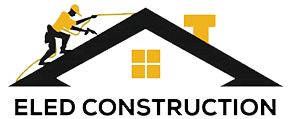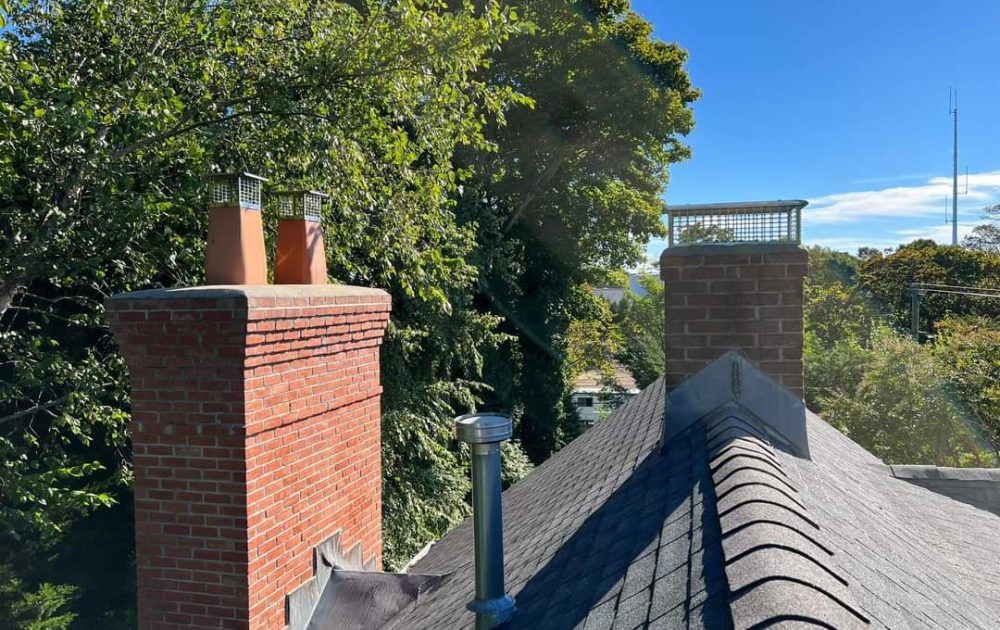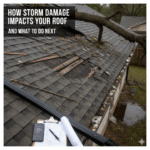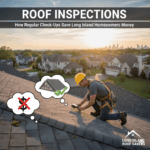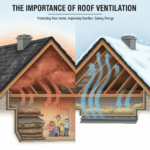Maintaining your chimney is not just about ensuring that your fireplace looks nice; it’s about keeping your home safe and your heating efficient. Neglecting chimney maintenance can lead to a range of issues, from poor air quality to potential fire hazards. In this guide, we’ll walk you through essential tips and tricks to keep your chimney in top shape.
Understanding Your Chimney
Parts of a Chimney
To effectively maintain your chimney, it’s crucial to understand its main components. The key parts include:
- Flue: The vertical passageway through which smoke and gases exit your home.
- Chimney Cap: A cover on top of the chimney to prevent debris, rain, and animals from entering.
- Damper: A movable plate that regulates airflow and prevents heat loss when the fireplace is not in use.
- Firebox: The area where the fire burns.
How a Chimney Works
When you light a fire in the fireplace, the heat causes the air inside the chimney to rise, creating a draft that pulls smoke and combustion gases out of your home. This process relies on a well-maintained chimney to function effectively.
Routine Chimney Inspections
Why Regular Inspections Are Crucial
Regular chimney inspections are vital for identifying potential problems before they become serious. Inspections help spot issues like creosote buildup, structural damage, and blockages that could lead to dangerous situations.
How Often Should You Inspect Your Chimney?
It’s recommended to have your chimney inspected at least once a year, preferably before the start of the heating season. However, if you use your fireplace frequently, more frequent inspections might be necessary.
Signs Your Chimney Needs Maintenance
Visual Cues
- Soot and Creosote Buildup: A thick layer of black soot or creosote on the chimney walls.
- Cracks or Deterioration: Visible cracks in the chimney structure or masonry.
- Staining: White staining (efflorescence) or rust stains on the exterior.
Functional Issues
- Smoke Issues: Smoke entering the room instead of exiting through the chimney.
- Poor Draft: Difficulty starting a fire or keeping it burning.
Cleaning Your Chimney
Tools Needed for Chimney Cleaning
- Chimney brush
- Extension rods
- Flashlight
- Dust mask and goggles
- Drop cloths
Step-by-Step Guide to Cleaning
- Prepare the Area: Cover the fireplace opening with drop cloths to prevent soot from entering your home.
- Wear Protective Gear: Put on a dust mask and goggles.
- Assemble the Chimney Brush: Attach the brush to the extension rods.
- Brush the Chimney: Insert the brush into the flue and scrub from top to bottom, dislodging soot and creosote.
- Clean Up: Remove the brush and clean up the soot that has fallen into the fireplace.
Preventing Creosote Buildup
What is Creosote?
Creosote is a tar-like substance that forms when wood smoke condenses in the chimney. It’s highly flammable and a major cause of chimney fires.
Tips to Minimize Creosote Accumulation
- Burn Seasoned Wood: Use dry, seasoned wood that burns hotter and cleaner.
- Maintain a Hot Fire: Hot fires reduce the amount of creosote that can condense.
- Install a Chimney Cap: This prevents debris and moisture from entering and forming creosote.
Dealing with Chimney Blockages
Common Causes of Blockages
- Animal Nests: Birds and other animals may build nests in the chimney.
- Debris: Leaves, twigs, and other debris can accumulate.
- Creosote: Heavy creosote buildup can cause blockages.
Safe Removal of Chimney Obstructions
- Professional Help: For severe blockages, it’s best to call a professional.
- DIY Removal: If you can safely reach the obstruction, carefully remove it with appropriate tools.
Chimney Caps and Their Importance
Benefits of Chimney Caps
- Prevent Debris: Keeps leaves, twigs, and other debris out of the chimney.
- Keep Animals Out: Prevents birds and small animals from entering.
- Reduce Moisture: Stops rain and snow from entering, which can cause damage.
Choosing the Right Chimney Cap
When selecting a chimney cap, consider the material (stainless steel or copper are durable options), the size of your chimney, and whether you need additional features like a spark guard.
Repairing Chimney Damage
Identifying Structural Damage
Look for cracks in the masonry, loose bricks, or signs of water damage. These issues can compromise the chimney’s integrity and should be addressed promptly.
DIY Repairs vs. Professional Help
Minor repairs, such as sealing small cracks or replacing a few bricks, can be done yourself. However, significant structural damage requires a professional mason to ensure safety and durability.
Waterproofing Your Chimney
Why Waterproofing is Essential
Water penetration can cause severe damage to the chimney structure, leading to deterioration of the masonry, rusted metal components, and mold growth.
Methods of Chimney Waterproofing
- Sealant Application: Apply a water-repellent sealant to the exterior masonry.
- Install a Chimney Cap: This also helps prevent water from entering the chimney.
Maintaining the Chimney Flue
What is a Chimney Flue?
The flue is the inner part of the chimney that directs smoke and gases out of your home. It’s typically lined with ceramic or metal to protect the chimney walls from heat and corrosion.
Tips for Flue Maintenance
- Regular Cleaning: Keep the flue clean to prevent creosote buildup.
- Check for Damage: Inspect the flue lining for cracks or damage.
Addressing Chimney Odors
Common Causes of Chimney Odors
- Creosote: A strong, tar-like smell from creosote buildup.
- Moisture: Dampness can cause musty odors.
- Debris: Decomposing leaves or animal nests can produce unpleasant smells.
Solutions to Eliminate Unpleasant Smells
- Clean Regularly: Regular cleaning removes odor-causing substances.
- Improve Ventilation: Ensure your chimney has proper airflow.
Importance of Chimney Liners
Types of Chimney Liners
- Clay Tile: Common in older homes, but can crack under heat stress.
- Metal: Durable and efficient, often made from stainless steel or aluminum.
- Cast-in-Place: A poured-in material that forms a seamless liner.
Installation and Maintenance Tips
Professional installation is recommended for chimney liners to ensure a proper fit and optimal performance. Regular inspections will help maintain their condition.
Fireplace Safety Tips
Safe Fireplace Practices
- Use a Fireplace Screen: Prevents embers from escaping.
- Keep Flammable Materials Away: Maintain a safe distance from the fireplace.
- Never Leave a Fire Unattended: Always supervise burning fires.
Ensuring Proper Ventilation
Proper ventilation is crucial to prevent smoke from entering your home and to ensure that the fire burns efficiently. Make sure your damper is fully open when using the fireplace.
Conclusion
Regular chimney maintenance is essential for the safety and efficiency of your home. By following these tips and staying proactive, you can prevent many common issues and enjoy the warmth and comfort of your fireplace worry-free.
FAQs
How often should I have my chimney inspected?
It’s recommended to have your chimney inspected at least once a year, preferably before the start of the heating season.
What are the risks of not maintaining my chimney?
Neglecting chimney maintenance can lead to creosote buildup, blockages, structural damage, and increased risk of chimney fires.
Can I clean my chimney myself?
Yes, you can clean your chimney yourself if you have the proper tools and take safety precautions. However, professional cleaning is recommended for thoroughness and safety.
How do I know if my chimney is blocked?
Signs of a blocked chimney include smoke backing up into the room, a strong odor from the fireplace, and a lack of draft.
What is the best way to prevent chimney fires?
Regular cleaning to remove creosote buildup, using seasoned wood, and ensuring proper ventilation are key to preventing chimney fires.
